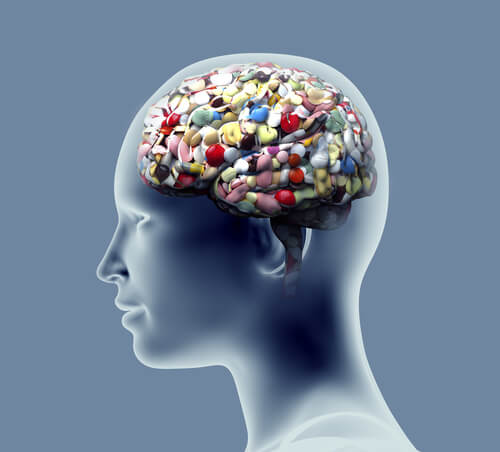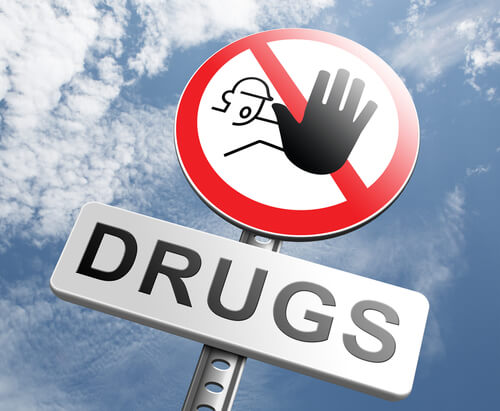How Does Drug Use Affect Adolescent Mental Health?

Drug use in adolescence is the source of many mental health problems. For example, a teenager who uses drugs is more likely to also exhibit low mood, anxiety, learning disorders, or behavioral disorders.
When a teenager is at his or her limit, what he or she is looking for is a quick solution, whatever it is, in order to feel immediate relief. They are tired of hearing from adults what they can and should do. Alcohol or drug use gives them that outlet. This often leads to what is known as comorbidity or associated morbidity.
“Drugs are the enemy of the future and of hope, and when we fight against them we fight for the future”
-Bob Riley-
What is comorbidity
Comorbidity is a condition in which a person suffers more than one mental illness simultaneously. Most of the time, these diseases should be addressed and treated individually. One of the most common forms of matched diseases is drug addiction and depression, especially in adolescents.

The funny thing about it is that drug use is not always the starting point of another mental illness. Sometimes mental illness is an added risk factor for drug use. Thus, a mood or anxiety disorder can lead a teen to use drugs as a form of “self-medication”.
Substance abuse (alcohol dependence or habitual use of drugs) is considered a mental illness.
In comorbidity there is also an interaction between the two diseases, so that a worsening in the symptoms of one usually results in a worsening in the symptoms of the other.
Drug addiction is a mental illness
Drug addiction is a chronic and recurrent disease that is characterized by the search and compulsive consumption of these substances, despite the knowledge of their harmful consequences. It is considered a mental illness because drugs modify the structure and functioning of the brain, seriously conditioning and limiting the life of the patient.
Addiction changes the brain fundamentally as it disrupts the normal hierarchy of needs and desires and replaces them with new priorities related to obtaining and using drugs.

The resulting compulsive behaviors weaken the ability to control impulses despite negative consequences. These behaviors are similar to the basic features of other mental illnesses.
Although the initial decision to use drugs is voluntary, the continued use of these substances alters a person’s ability to exercise self-control, which can be seriously affected. This deterioration in self-control is the hallmark of addiction.
Brain imaging studies of people with addictions show physical changes in areas of the brain that are essential for judgment, decision making, learning and memory as well as for behavior control. Scientists believe that these changes alter the way the brain works and can help explain the compulsive and destructive behaviors of addiction.
Risk factors for drug abuse among adolescents and mental health problems
Drug abuse and other mental illnesses have much in common, including a number of causes. Some of the risk factors that can lead to drug abuse and mental instability in adolescents are as follows:
Brain development
According to the University of Rochester Medical Center, the human brain does not fully develop until approximately 25 years of age. In particular, the pre-frontal cortex, responsible for decision-making and emotional control is still developing.
Until that time, teenagers and young adults are looking for acceptance and how to impress others without considering the consequences. They are still prone to making impulsive decisions, with less reliance on emotions and reason. This makes them particularly susceptible to developing multiple mental health problems.
Verbal abuse or physical abuse
Verbal or physical abuse during childhood and adolescence can leave physical and emotional scars. Young people who have been victims of these abuses will seek any way to suppress the pain they have suffered, even long after suffering such abuses.

The scars caused by the abuse are often accompanied by low self-esteem, hopelessness, paranoia and even thoughts of suicide. Something that does not facilitate precisely the reflection on the damage that substance abuse produces in the body, but quite the opposite.
Early exposure
Statistics have shown that when children are exposed to drugs and/or alcohol they are more likely to develop addiction problems. Just look at it in your nearest environment.
Drug or alcohol use may be a contributing factor to mental instability, especially at an early age, since drugs can alter the development of young people’s neurological systems and respond to stress.
Pressure
The environment is constantly pushing young people about what they should or should not do. Parents, educators and the media put pressure on teenagers, who feel pressured everywhere to become perfect people.
All this pressure is undoubtedly a contributing factor to young people feeling anxiety and low self-esteem, as well as experiencing doubts. This results in an internal, constant and unnecessary battle of self-defense that can end in addiction, depression, and suicidal thoughts or tendencies. Adults know that it is impossible to please everyone. However, teenagers are still learning.
The importance of prevention in periods of high risk
Early drug use increases the chances of a person developing an addiction. Prevention of early drug or alcohol use can make a big difference in reducing these risks. If we can prevent young people from experimenting with drugs, we can prevent drug addiction.

The risk of drug abuse increases at times of transition. In early adolescence, when children move from elementary to middle school, they face new and challenging social and academic situations.
During this period, children are exposed for the first time to substances that lend themselves to abuse (such as tobacco and alcohol) for the first time. When they begin high school, adolescents are closer to the channels of access to drugs and it is not uncommon for them to end up witnessing their use.
At the same time, many normal behaviors of their development, such as the desire to try new things or take greater risks, can increase their tendency to experiment with drugs. Others may think that taking drugs improves their physical appearance or their intellectual or sports performance, which will lessen their anxiety in social situations.
On the other hand, adolescents’ ability to exercise good judgment and make decisions are still developing and may limit their ability to accurately assess the risks of all these forms of drug use.
Teen Self-Esteem, A Challenge For Parents
Parents cannot forget their great responsibility in educating adolescents and building their self-esteem. See more
This text is provided for informational purposes only and does not replace consultation with a professional. If in doubt, consult your specialist.








